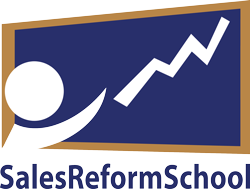No, I am not cursing at you!
What I do want to point out is one of the most often overlooked sales closing tools.
I know, “everyone knows the key to increasing sales is a good cost v. benefit analysis.” Then, ask yourself if you’ve ever had a terrific sales presentation, felt the deal was going to close, slacked off (maybe decided to play a round of golf or angry birds) and then NOTHING HAPPENED?
Why? Maybe because you were so confident the buyer would buy, that you neglected to put together and gain agreement on the Cost v. Benefit of your prospect using your solution. The prospect did not feel attached to your capabilities and either chose to stay pat or worse, go with a competitor.
Notice that I did not call it a “return on investment”. That expression is so yesterday. ROIs seem so far in the future that buyers don’t believe them. Even worse, “return on investment” might remind them of their meager personal investment returns and make them shudder.
Alternatively, Cost v. Benefit is upfront and factual. “Here’s the cost. Here’s the short and medium term benefit using the information you told me.” It may be semantics.
So what.
Intuitively, a cost v. benefit sounds more reachable and less risky than an ROI.
The tricky part is the benefit side of the equation. How do you get there? THAT IS THE SECRET SAUCE!!!  You get there early in the sales cycle by asking the right questions to gain clarification of what’s actually happening within your prospect’s environment that your capabilities could improve.
You get there early in the sales cycle by asking the right questions to gain clarification of what’s actually happening within your prospect’s environment that your capabilities could improve.
You must gain an understanding and agreement on 1) the frequency the challenge or issue arises (“#”), 2) the number of dollars overcoming the challenge is worth (“$”), and 3) the percentage of time the challenge occurs or percentage of individuals who suffer with the challenge (“%”). It helps then to know whether the prospect is emotionally connected to improving the situation or circumstances (“E”). If you are not sure, then ask.
Yes, emotions.
“How does it make you (your team, the affected group) feel?”
“How badly do you and your team members want to fix …?”
This gives you and your prospect an idea about the emotions of the situation. At times, all the hard dollar gain in the world may not help you close the opportunity if your prospect isn’t connected on an emotional level to your offering or solution.
#$%E!!!!
THESE ARE NOT SUBSTITUTES FOR SWEAR WORDS.
BURN THESE SYMBOLS IN YOUR MIND PRIOR TO TALKING TO PROSPECTS.
Even better, plan out the questions prior to the call that will draw out value or benefit, questions that will lead to your gaining agreement from the prospect on #$%E! of their current situation.
Now, what are you going to do next, take aim at some sheltered pigs or have a #$%E! conversation with your prospects?
Good Selling!
